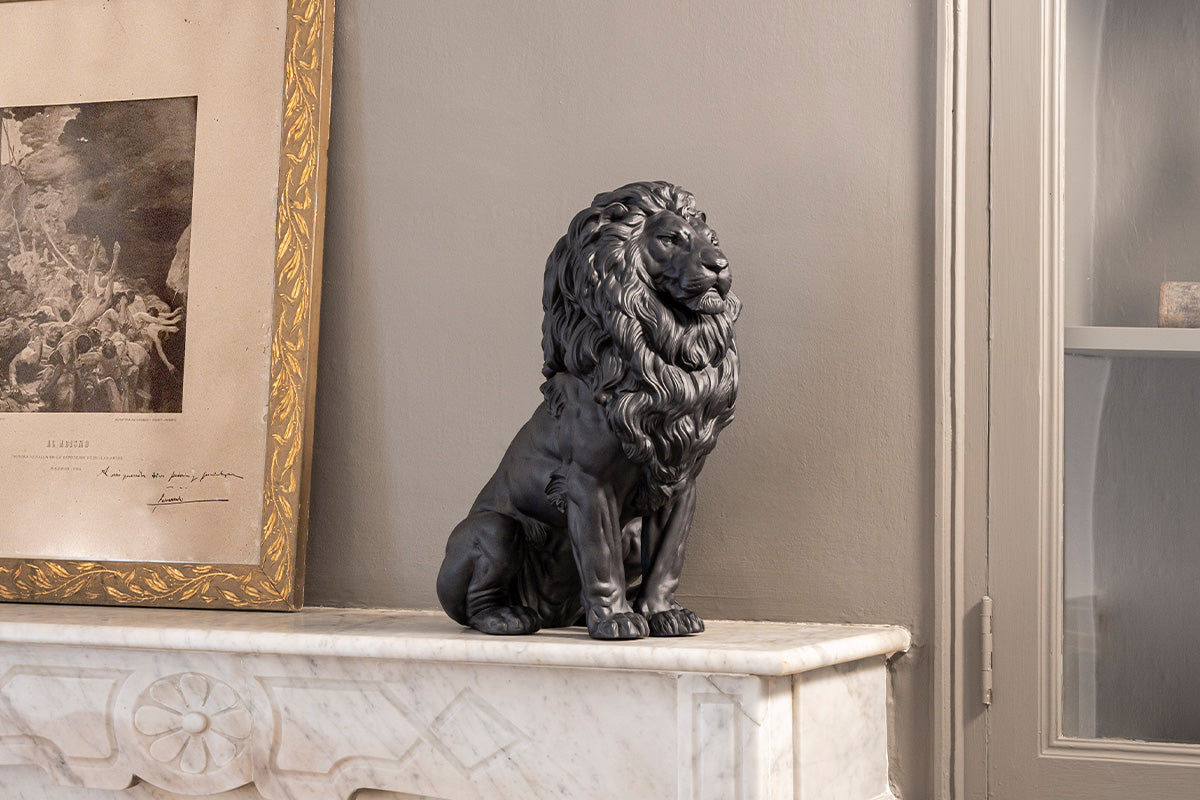Guardian Snakes Around the World - Overcoming Fear and Empowering Growth
Share
Snakes are one of the most beautiful and important part of a sustainable ecosystem, but it is often misunderstood as bringers of death and evil. It is true that some venomous snakes are a dangerous threat to humans, which may suggest a biological basis for the phobia, However, the fear may just be misconception for many due to their lack of knowledge or the various depictions of snakes in a negative context within pop culture.
Lladró's new Baby Animals Collection recreates the zodiac animals in a charming and irresistible figurine form with the Baby Snake and Baby Dragon. They feature a special technique that creates both a matt and glossy appearance on the scales of these baby figures.
As a species that is available in almost all continents, snakes have become protective symbols in some cultures. To usher in the year of the Wood Snake in 2025, let's overcome our fears and empower personal growth by learning about five examples of snakes acting as protectors in cultures across the world.
1. Asclepius - God of Medicine
Ancient Greece
In Ancient Greece, snakes were considered sacred beings of wisdom, healing and resurrection, and this can been seen in the myth of the Greek God of Medicine, Asclepius. Asclepius learnt the art of healing from his father, Apollo, and the centaur Chiron. It was said that after rendering an act of kindness to a snake, it whispered to him secret knowledge that enabled him to perform miraculous feats including boundless healing and the resurrection of the dead.
Hades, accusing Asclepius of disrupting the balance of life and death, complaint to his brother Zeus, who also become fearful that Asclepius would teach the art of resurrection to others. Ultimately, Asclepius was struck down but then immortalised as the constellation Ophiuchus (meaning snake-bearer). His symbol, a rod intertwined with a snake, also became the modern symbol for medicine still used today (although the more common representation is the winged version representing Mercury's caduceus).

Asclepius is immortalised by Zeus in the skies as Ophiuchus (meaning snake-bearer). The snake coiled around a rod is still common iconography for fields of medicine today.
2. Wadjet and Nehebkau
Ancient Egypt
Wadjet is a guardian goddess of cobras and the royalty, and is the matron of Lower Egypt and upon unification with her sister Nekhbet, goddess of Upper Egypt, the protector of all Egypt. She is traditionally depicted as a winged Egyptian Cobra, although she also takes the form of a snake-headed woman, or a lioness-headed woman wearing an Uraues crown. Snakes in Ancient Egypt represented royalty, fertility, protection and rebirth which is why pharaohs and queens, including Cleopatra, wore a Uraues crown, a crown topped with rearing snakes which signifies divine authority and sovereignty.
 The Uraeus crown is a sign of Egyptian royalty, divine authority and sovereignty, and can be seen worn by Egyptian pharaohs and even by Cleopatra herself, as depicted in Lladró's Cleopatra Sculpture Limited Edition.
The Uraeus crown is a sign of Egyptian royalty, divine authority and sovereignty, and can be seen worn by Egyptian pharaohs and even by Cleopatra herself, as depicted in Lladró's Cleopatra Sculpture Limited Edition.
Nehebkau is the Egyptian primordial snake god primarily functioning as the funerary god of the afterlife, guarding the underworld and judging the souls of those who have just passed. He is also the servant and ruling partner of the sun god Ra during his rule, and eventually succeeded him and became the King of Heavens and Ruler of Two Lands.
Both symbols of Wadjet and Nehebkau appears in tombs of pharaohs and royalty, guarding them eternally throughout their afterlife. Another common symbol is the ouroboros, a snake eating its own tail in a figure-of-eight. It represents eternity, endless cycles, and the unity of all things.
The matt black treatment of Lladró's Snakes Collection easily blends into the aesthetic of many spaces whilst providing textural complexity. The Snakes Vase, Snakes Clock and Snakes Candleholder all showcases different serpentine movements in a contemporary style.
3. Rainbow Serpent
Aboriginal Australia
The concept of the Rainbow Serpent has existed for a long time within many aboriginal tribes' cultural tradition as one of the many Ancestral Beings. It goes by different names depending on the tribe, and is heavily featured in The Dreaming, a complex of eternally timeless meanings that provides a moral code and guidelines for living in the world. In different depictions, the Rainbow Serpent is male, female, ambiguously gendered, hermaphroditic, or even androgynous. Due to its affinity with water, it has also come to represent a symbiotic balance between the living beings and the environments they occupy.
Snakes are beautiful creatures and often misunderstood. They have been symbols of intelligence, rejuvenation, and protection in cultures around the world. Lladró's Snake Sculpture, a part of the White-Copper Collection, gives an albino-looking snake contemporary treatment of copper lustres for the dashing elegance.
Despite the wide variation in Rainbow Serpent stories passed down intergenerationally within tribes, the most common motif is the Rainbow Serpent acting as a creator. and bringing life to an empty space. Today, the Rainbow Serpent still provides inspiration for art, film, literature, religion, music and social movements. Although non-indigenous Australian have reduced the Rainbow Serpent to simplistic symbology of the aboriginal identity, many today still embrace the vibrantly amorphous and highly ambivalent protector and punisher today.
4. Lord Shiva and Lord Vishnu
Hinduism
In his Narayana form, Lord Vishnu is depicted as resting on Shesha, the prime king of nagas and primordial being of creation in Hinduism. Shesha is sometimes stated to hold all the planets of the universe and his name literally translates to 'he who remains' because even after everything is destroyed Shesha will endure. Together, they represent the harmony between the divine and the universe and Vishnu's role as the cosmic protector.
Lord Shiva's depiction with the snake Vasuki is seen in full detail in Lladró's Lord Shiva Sculpture Limited Edition, and teaches us to control our inner desires and not lose control over it.
Lord Shiva is usually depicted with a Vasuki, the second king of all nagas, coiled around his neck. Vasuki's presence signifies transformation and regeneration. As snakes shed their skin, Vasuki represents the ability to let go of the old and embrace the new, reflected in Lord Shiva's role of the destroyer and creator. The snake also represents passion and desire, and demonstrates to Lord Shivas devotees his complete control over Prakriti (nature) and its illusions (Maya).
For more cultural articles, continue on below:
- Be Fearless With Lladró’s Protection Mudra
- Chinese Guardian Lions: The Lions That Stand Sentry In Front Of Palaces, Temples, And Homes Of The Elite
- Elevated Beauty: Lladró’s Exploration of Angelic Beings
- Japanese Hina Dolls - Symbols of Aspirational Legacy and Modern Takes on a Centuries-Old Tradition









